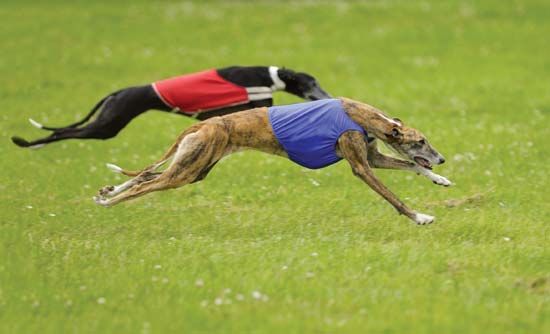coursing
Our editors will review what you’ve submitted and determine whether to revise the article.
- Related Topics:
- dog
- dog racing
- Waterloo Cup
coursing, the pursuit of game by hounds hunting by sight and not by scent. In modern, organized coursing competitions, two greyhounds at a time pursue one hare. The dogs are judged on performance as well as on their success in catching the hare: points are awarded for outracing the other dog and catching up with the hare, for turning it at a right angle, for wrenching (turning it at less than a right angle), for tripping the hare, and for a kill. Coursing was fully described about ad 150 by the Greek philosopher and historian Arrian in his Cynegeticus (translated as Arrian on Hunting).
The sport became very popular in England, Ireland, and Scotland during the 16th century, and the first known set of rules was drawn up by Thomas Howard, duke of Norfolk. The “laws of the leash,” as they were called, laid down principles upon which the sport has since been based.
The first known coursing club came into existence in 1776 at Swaffham through the enterprise of Lord Orford. The Waterloo Cup, the Derby of coursing, was established in 1836 and is held annually at the Altcar Club, near Liverpool. The event was named for the Waterloo Hotel in Liverpool, where the first promoters met. The National Coursing Club was formed in 1858.

Coursing was taken up in the United States early in the 19th century. An American Coursing Board governed the sport from 1886 to 1906, when the National Coursing Association (NCA) came into being. Spring and fall coursing meetings are held by the association in Abilene, Kan. The sport is also still practiced in parts of Australia.
Dog, or greyhound, racing with a mechanical lure is a popular outgrowth of coursing.















